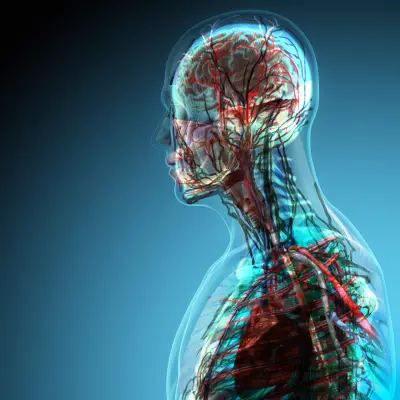If you’ve been dealing with ongoing aches, muscle tightness, or a sense that your body feels restricted or tense, you might have come across something called myofascial release therapy. This type of massage supports your body’s natural ability to move, recover, and feel more at ease.
You might be looking into this therapy because nothing else has quite worked, or you’ve heard it mentioned by a friend, physiotherapist or massage therapist. This guide explores what myofascial release therapy is, how it works, and what you can expect from it.
Jump to:
- What is Myofascial Release Therapy?
- What Does Myofascial Release Therapy Do?
- What is a Myofascial Therapist?
- How Does Myofascial Release Massage Work?
- What is a Myofascial Massage Like?
- Who Needs Myofascial Release?
- How Do I Know if I Need Myofascial Release?
- How Do You Release Myofascial Trigger Points?
- What Does it Feel Like When Fascia Releases?
- Can I Do Myofascial Release on Myself?
- Is Myofascial Release the Same as Massage?
- Frequently Asked Questions About Myofascial Release Therapy
- Study Our Massage Therapist Diploma for £29
Recommended for you!
Best SellersWhat is Myofascial Release Therapy?
Myofascial release therapy is a hands-on technique used to ease tension in the fascia, a type of connective tissue that surrounds your muscles, bones, and organs.
When healthy, fascia is elastic and flexible. But it can become tight or ‘stuck’ due to injury, poor posture, repetitive movements, and stress. This can lead to discomfort, limited motion, and even pain in places that might seem unrelated to the problem.
Myofascial massage therapy involves gently stretching and manipulating this tissue to help it loosen and return to its natural, healthy state. This type of therapy is also known as muscle fascia release or fascial massage; you’ll hear all of these terms used interchangeably.
What Does Myofascial Release Therapy Do?

Myofascial release therapy helps restore movement and reduce pain by targeting restrictions in the fascia. Instead of just targeting pain points, this therapy aims to treat the root cause, which may be somewhere else entirely.
The benefits of myofascial release include:
- Easing muscular pain and stiffness
- Improving flexibility and mobility
- Enhancing posture and body alignment
- Supporting recovery from injury
- Relieving stress stored in the body
It’s often used to treat conditions like back pain, neck tension, sports injuries, myofascial pain syndrome, and headaches.
What is a Myofascial Therapist?
A myofascial therapist is someone trained to assess and treat fascial restrictions. They often have backgrounds in massage therapy, physiotherapy, osteopathy, or other bodywork disciplines.
Their job is to find areas where the fascia is tight, knotted, or pulling on muscles in a way that creates discomfort or dysfunction. With practice and training, they learn to feel these restrictions through their hands and use targeted pressure to release them.
You may not even realise how restricted your fascia is until a therapist starts working on it, and you suddenly feel how much freer your body can move.
How Does Myofascial Release Massage Work?

This type of therapy is slow, focused, and very intentional. Unlike deep tissue massage or Swedish massage, which may use fast strokes or rhythmic movements, myofascial release massage involves applying sustained pressure to specific areas of tightness.
A trained myofascial release therapist will use their hands, forearms, or elbows to sink into the tissue, holding the pressure for a minute or more. The aim is to allow the fascia to slowly stretch and release without forcing it.
Over time, this can help release fascia that has become rigid or inflamed, encouraging it to become more pliable and functional again. It’s about guiding the body into releasing, not pushing or forcing it.
What is a Myofascial Massage Like?
If you’ve never experienced it before, you might wonder what a myofascial massage is like. It’s not always what people expect. You won’t feel lots of kneading or rubbing; instead, it may feel like a deep, steady stretch under the skin. Some areas might be tender, especially if the fascia is very tight, but the discomfort is usually manageable and subsides as the tissue relaxes.
Most people describe a myofascial massage as intense but relieving, especially once the session is over and their body begins to feel looser and lighter.
Who Needs Myofascial Release?

Anyone can benefit from myofascial therapy, but it’s especially helpful for:
- People with chronic muscle tension
- Those recovering from injuries or surgery
- People with limited flexibility or range of motion
- Those who sit for long hours
- Athletes looking to enhance performance and prevent injury
It’s also useful for those with myofascial pain syndrome, fibromyalgia, or postural problems. If you feel stuck in your body, this approach may help you find relief and restore balance.
How Do I Know if I Need Myofascial Release?
You might need myofascial release if you:
- Have persistent tension that doesn’t ease with stretching
- Feel restricted in movement or flexibility
- Experience unexplained aches or pressure
- Have old injuries that never fully healed
- Notice that massage or physiotherapy provides only short-term relief
If these symptoms sound familiar, fascia could be playing a bigger role than you think.
How Do You Release Myofascial Trigger Points?
Trigger points are small, tight knots in the fascia that can be surprisingly painful. These points can also send pain to other parts of the body—what’s known as referred pain. For example, a trigger point in your upper back might cause headaches or neck pain.
To release myofascial trigger points, therapists apply sustained pressure directly to the knot until the tissue softens. This can take time, especially if the area has been tight for years. Some people also use foam rollers or a tennis ball for self-release techniques, which we’ll explore in a moment.
What Does it Feel Like When Fascia Releases?
When releasing fascia, it can feel different for everyone. Some people describe a warmth or tingling sensation, while others feel a gentle shift in the tissue, like something is melting. Sometimes, people feel emotional or relaxed, as the body lets go of built-up tension.
Afterwards, you might feel sore, similar to the feeling after a good workout, but also noticeably freer in your movements. This is a sign that your body is adjusting and healing.
Can I Do Myofascial Release on Myself?

You can safely practise self-myofascial release at home. Using simple tools like a tennis ball, foam roller, or massage stick, you can apply pressure to tight spots and gently stretch your fascia.
Here are a few tips:
- Move slowly and breathe deeply
- Apply pressure to one spot and hold for 1–2 minutes
- Focus on relaxing rather than forcing the tissue
- Avoid bony areas or joints
While self-treatment is helpful, it’s not always a substitute for working with a professional who can detect more complex issues and provide more precise treatment.
Is Myofascial Release the Same as Massage?
In some ways, yes, as both involve manual pressure and hands-on techniques. But there are key differences.
Massage typically focuses on muscle relaxation and circulation, using strokes and movement. Myofascial release focuses on fascia and involves slow, sustained pressure without oil or fast movement. The intention is to stretch the fascia and allow it to release on its own.
Myofascial release may be better than massage. If your pain stems from tight fascia or postural imbalances, myofascial release may be more effective.
Recommended for you!
Best SellersFrequently Asked Questions About Myofascial Release Therapy
What are the side effects of myofascial release?
You might feel sore or tired after a session. These effects usually pass within 24–48 hours. Some people also experience emotional releases or feel unusually relaxed as their body adjusts.
Why is myofascial release so painful?
Tight fascia can be sensitive. The pain is usually temporary and lessens as the tissue relaxes. It’s a sign that the body is working through long-held tension, and discomfort often leads to lasting relief.
What body part should you not use myofascial release on?
Avoid areas with open wounds, recent surgery, or deep vein thrombosis. Be cautious around the neck, spine, and abdomen unless guided by a professional. Misuse in these areas could lead to injury or complications.
What can be mistaken for myofascial pain?
Joint disorders, nerve pain, or inflammation can mimic myofascial pain. Always consult a professional if you’re unsure. A proper diagnosis can help you choose the right therapy and avoid ineffective treatments.
How painful is myofascial release?
Myofascial release can be uncomfortable in tight spots, but shouldn’t be unbearable. Speak up if the pressure feels too intense. A skilled therapist will adjust their technique to keep you safe and comfortable.
What vitamin deficiency causes myofascial pain?
Low levels of Vitamin D or magnesium may contribute to muscle and fascia discomfort, though more research is needed. Eating a balanced diet and supplementing if necessary may help ease symptoms.
Is myofascial pain part of fibromyalgia?
People with fibromyalgia often have myofascial trigger points as well. Addressing these points through therapy can be part of an effective pain management plan.
Do physiotherapists do myofascial release?
Many physiotherapists are trained in this technique and include it in broader treatment plans. They may combine it with other rehabilitation exercises and therapies to support your recovery.
How to use a tennis ball for myofascial release?
Place it under a tight area, lie on it or press into a wall, and hold the pressure. Move slowly and breathe. Focus on relaxing the muscle and letting the tension release naturally over time.
Study Our Massage Therapist Diploma for £29
If you’re fascinated by how the body works and want to learn how to help others relieve pain and move with greater freedom, why not take your interest further? The Massage Therapist Diploma Course at Centre of Excellence is an excellent place to start. This course covers the foundations of massage therapy, including techniques for working with fascia and muscular tension.












